Best full-shade perennials – 7 perfect plants to add foliage and flowers to darker borders
These perennial plants will brighten up even the shadiest of yards, adding lush foliage and brilliant blooms to tricky areas under shrubs and trees
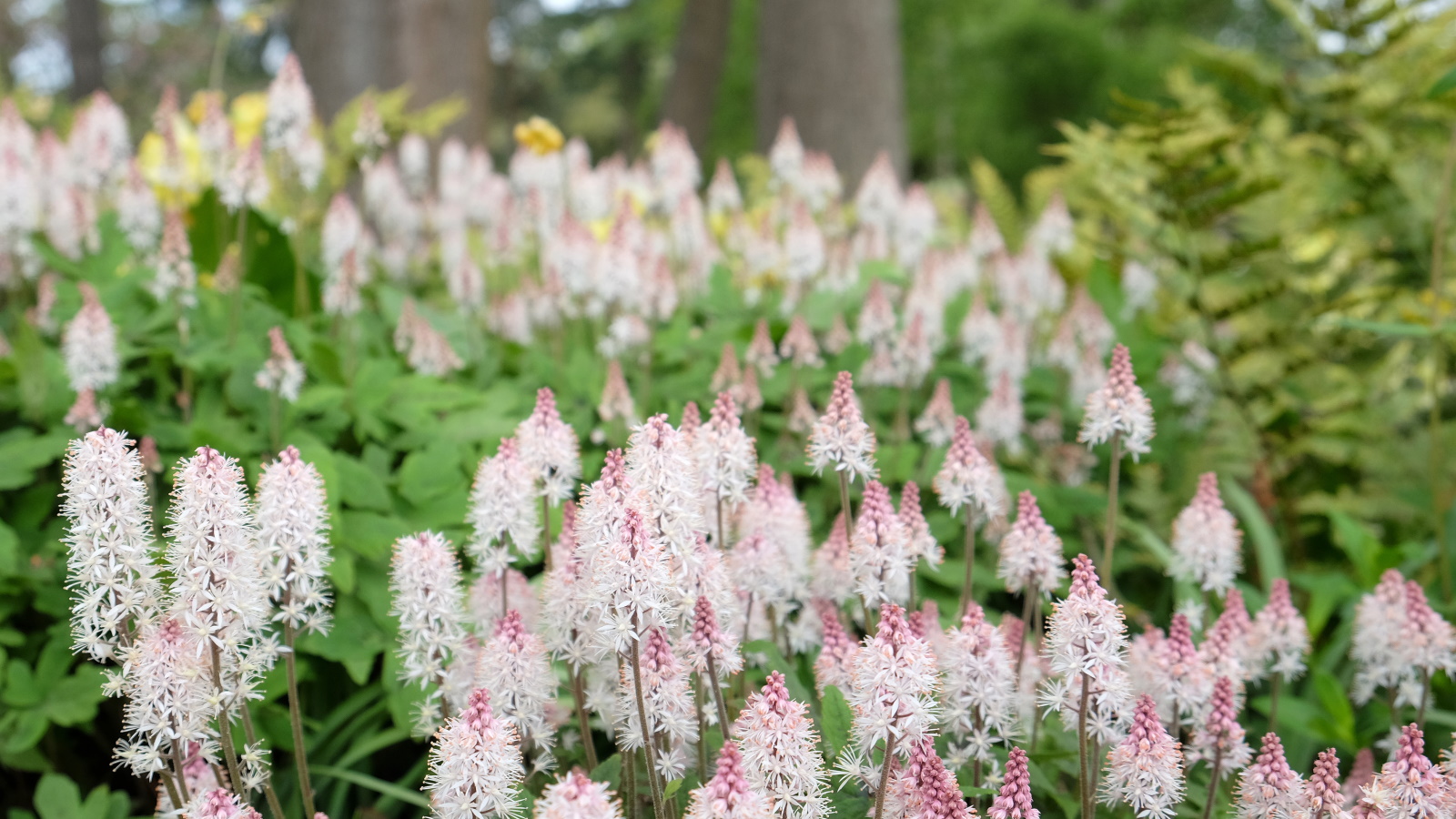

Shady areas in the garden can often get overlooked and ignored. Yet, many full-shade perennials will thrive in darker spots, helping to add green foliage and colorful blooms to those tricky areas under large trees and shrubs found at the bottom of the yard.
Perennials are a good choice for gardeners as they are long-lasting, returning year after year as temperatures rise in springtime. While some care is generally involved, such as pruning and cutting back in the fall and winter, many perennials listed here can be considered low-maintenance, doing well with minimal effort. As a professional gardener, I have grown all of these perennials and can testify to their shade tolerance.
So, if you are looking for some of the best shade plants or the best plants for under trees, consider adding some of these full-shade perennials to your backyard this year, helping to brighten up those challenging, shaded parts of your plot.
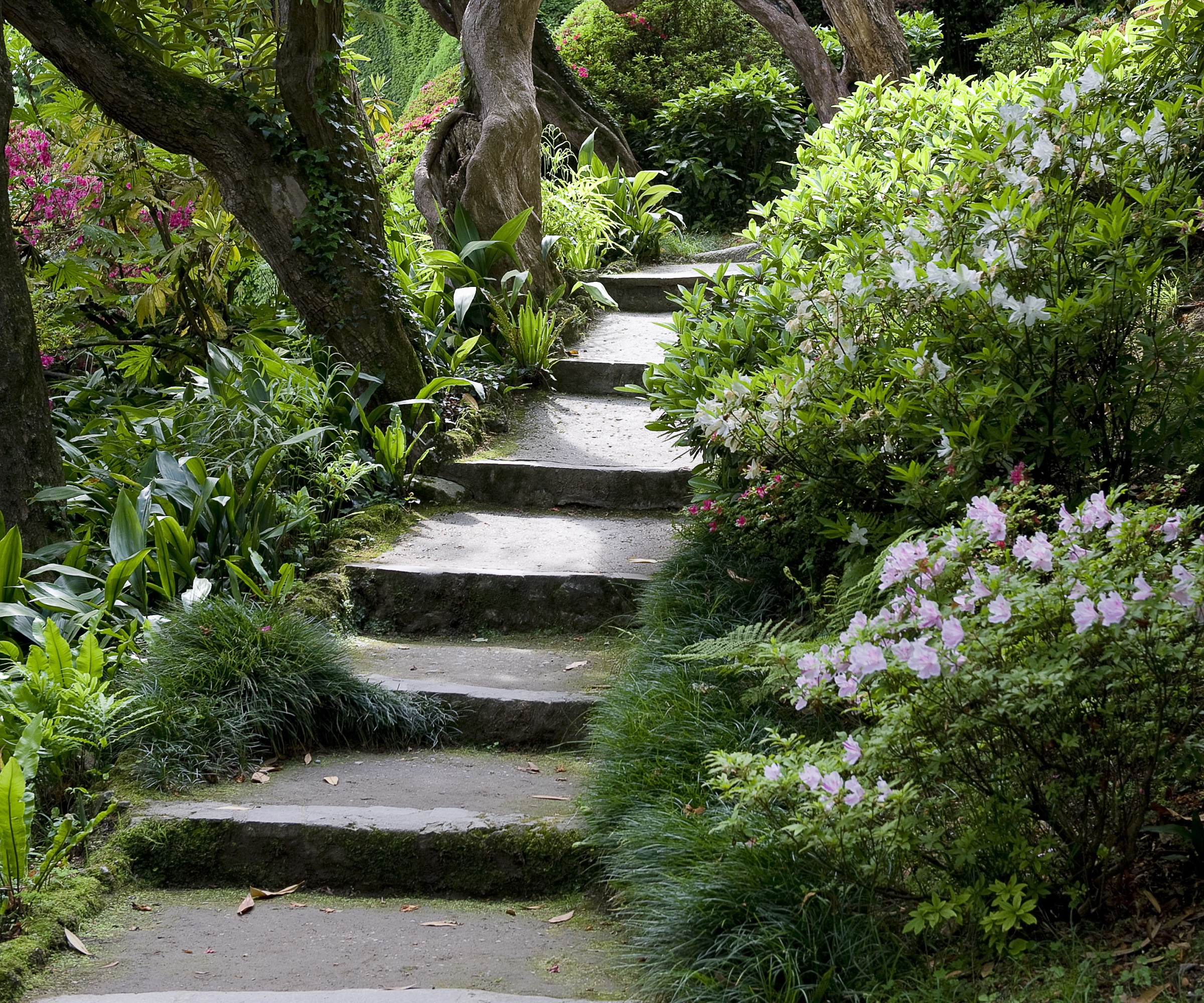
7 of the best full-shade perennials
These full-shade perennials are suitable for areas that get very little or no direct sunlight. These plants are ideal choices for those areas that are dark from the shade cast by trees, shrubs, or buildings.
Part-shade perennials are more suited to areas that receive a small amount of direct sunlight each day, even if that is just two or three hours.
1. Tiarella
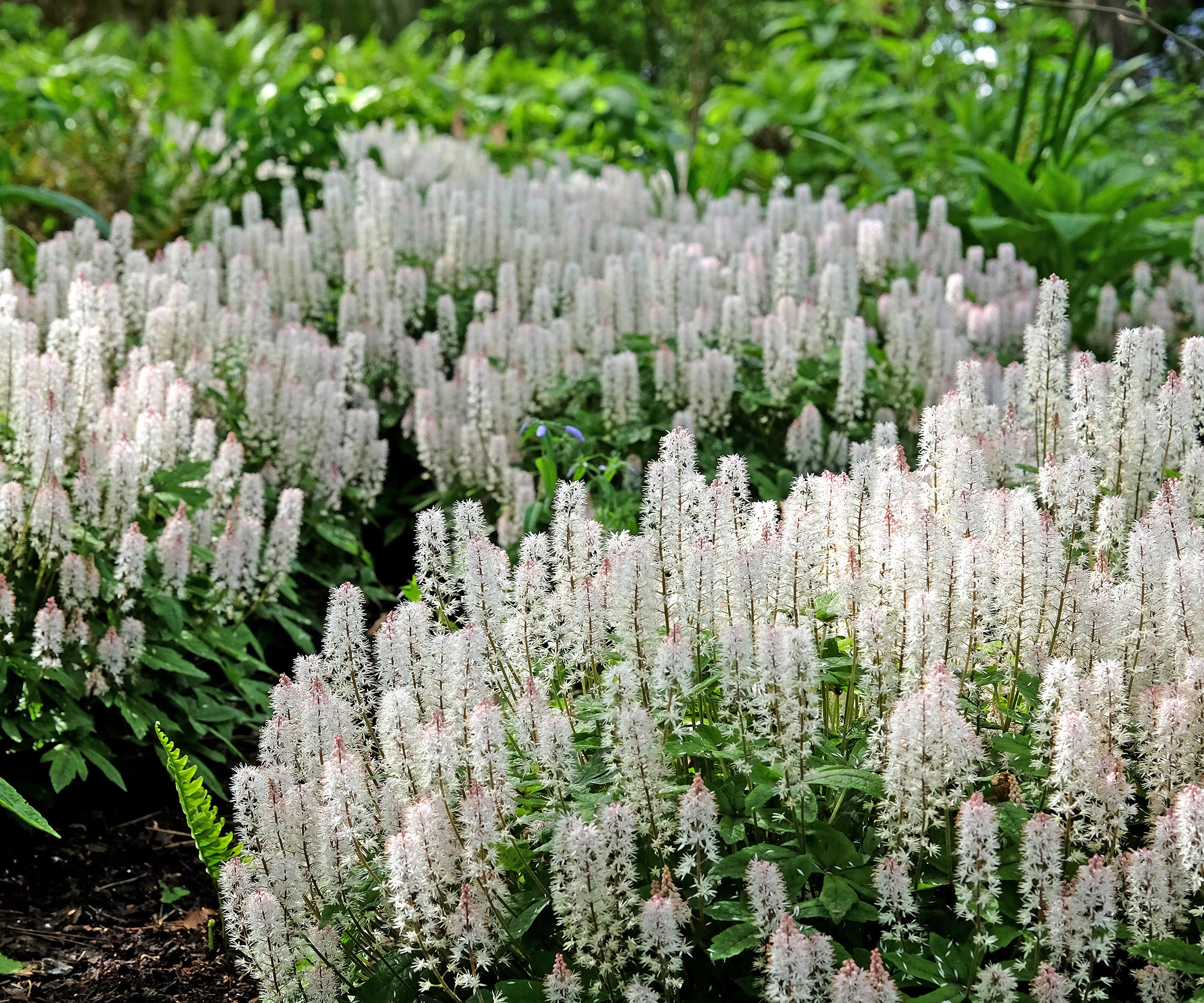
I have grown foam flowers, or Tiarella cordifolia, in many gardens that I have worked in across the UK. The foam-like white and pink blooms never fail to make me smile, and herald the arrival of spring and warmer days to come.
Native to the wet woodlands of North America, tiarella plants can be grown in US hardiness zone 3 through to US hardiness zone 9, making them a versatile and resilient full-shade perennial. Clump forming, this perennial has attractive heart-shaped leaves that often have colorful markings, making it a unique option for those gardeners seeking ground cover options, but want something different than the usual go-to plants.
Foam flowers can be bought online at Nature Hills.
2. Hostas
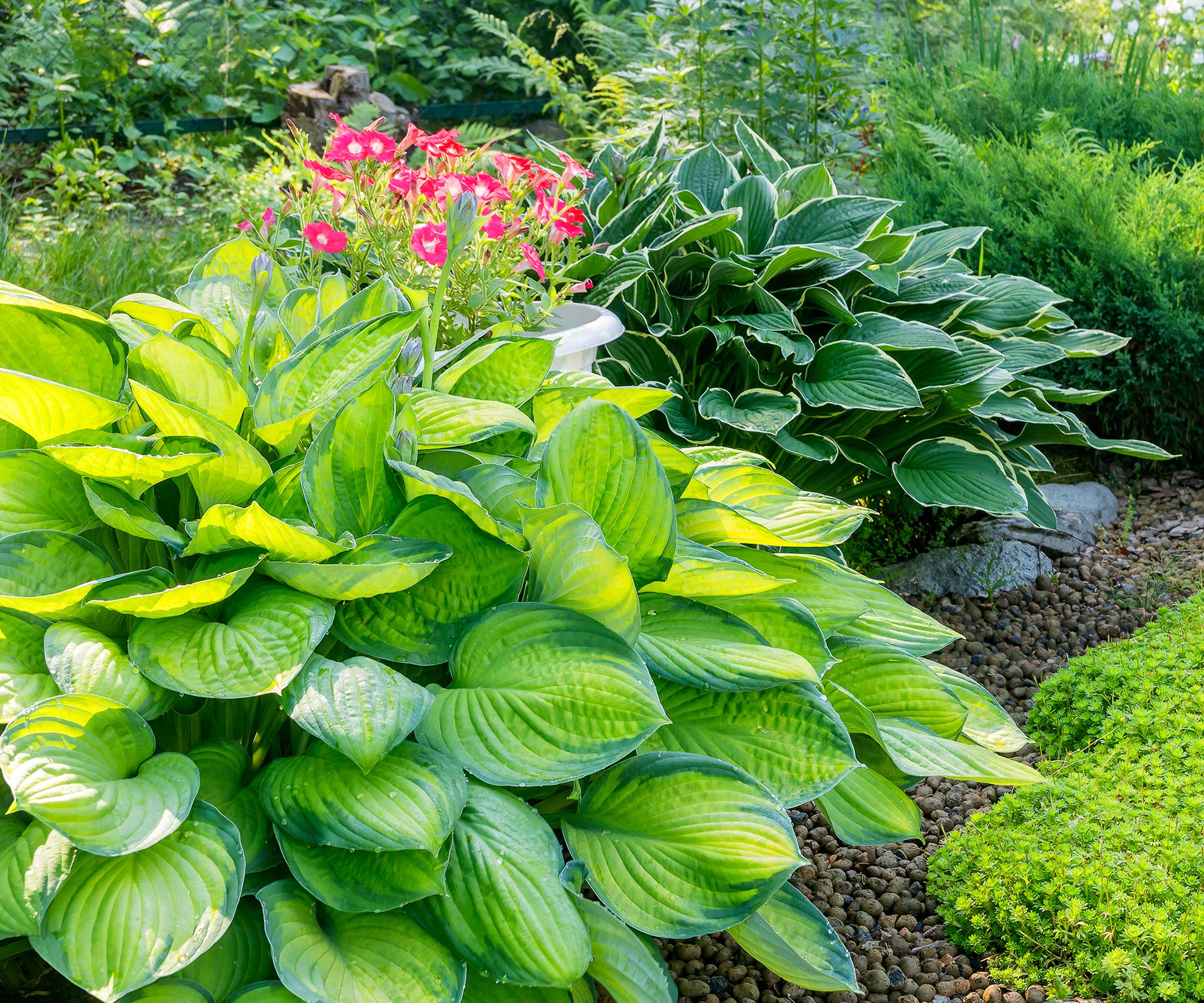
'Hostas are celebrated for their lush foliage, often boasting broad, heart-shaped leaves that range in color from bluish-green to lime-green,' says Autumn Janus, plant expert from Perfect Plants.
'These are ideal full-shade perennials, helping to add a cool and serene touch to any garden landscape,' Autumn adds. 'And, while not primarily grown for their flowers, hostas can produce delicate lavender blooms on tall stems in the summer, which complement the verdant foliage beautifully.'
When considering how to grow hostas, note that these perennial plants grow best in US hardiness zone 3 to US hardiness zone 8. They 'thrive in moist soil,' Autumn adds, 'preferring consistently damp conditions to truly flourish, making hosta plants an ideal choice for gardens with high moisture levels.'
Hosta plants are available to buy online from Perfect Plants.

Autumn is a horticulture specialist and marketing professional at Perfect Plants Nursery. With four years of experience in the horticulture industry, she has developed a passion for helping people create beautiful indoor and outdoor spaces to enjoy. Her expertise in horticulture encompasses a broad range of activities, including plant care and selection, landscape design, and maintenance.
3. Japanese anemone
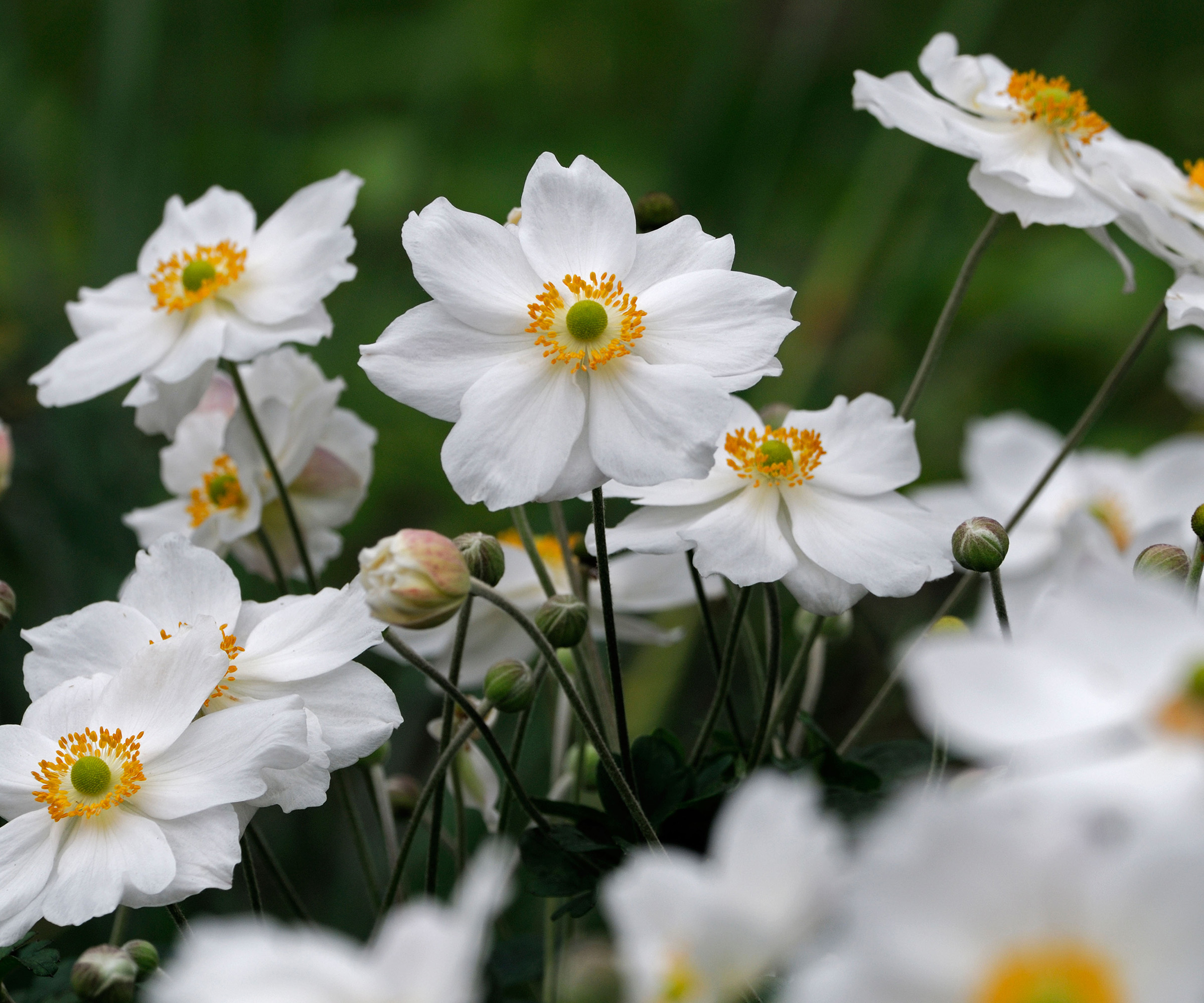
Growing best in US hardiness zone 5 to zone 8, Japanese anemone plants can tolerate partial to full shade and have long been a favorite of mine.
There are many different anemone species and, as woodland plants, many are suited to growing in even the darkest spots. Japanese anemones are particularly impactful as they produce masses of blooms on tall stems that can reach up to 3 feet and go on flowering right up until the fall. One variety I have grown in different gardens is 'Honorine Jobert', available at Nature Hills, and seems to be particularly long-flowering.
Once established, dense clumps can almost act as a perennial groundcover, helping to add greenery to challenging locations. In my experience, applying a high phosphorus fertilizer once a year can help to encourage flowering. In addition, learning how to propagate Japanese anemones is an easy way to grow your collection, and share with friends and neighbors, if you are feeling generous.
4. Bugleweed
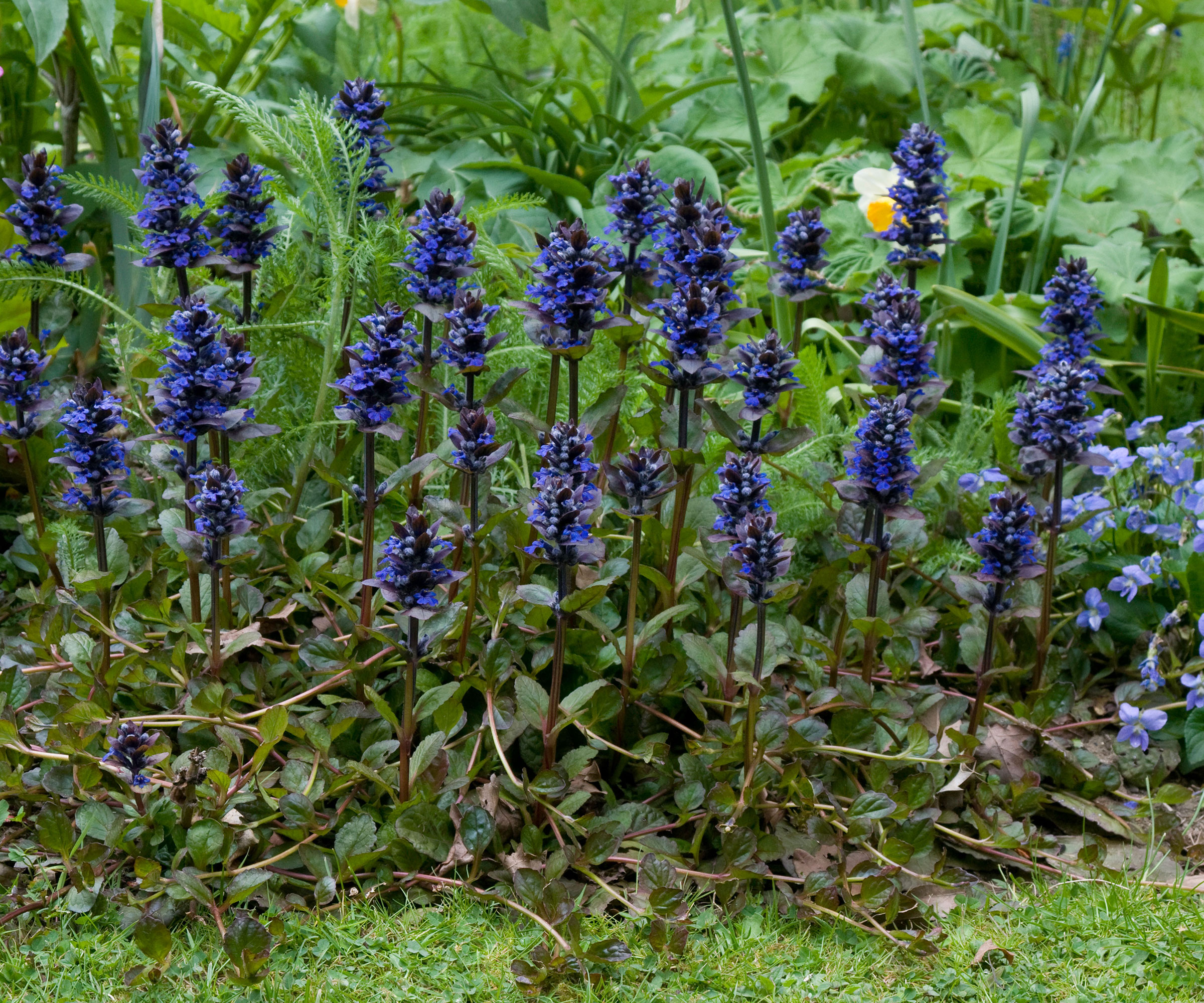
Bugleweed is an easy-to-grow option that remains popular with gardeners seeking fast-growing ground cover plants. This perennial is an ideal choice for shady yards, but be warned, it can take over and is considered invasive in some regions and states. Always consult your local government or municipality if are unsure what plants are considered invasive in your region.
With attractive dark foliage, bugleweed can be grown in US hardiness zones 3 to 10, and is noted as a resilient and versatile perennial. In addition, most varieties will produce purple-blue flower spikes in spring and summer, blooming even in deep shade.
I have previously grown bugleweed in corners of the yard where it is free to spread, but if you are worried about the vigorous nature of this perennial, it is best avoided.
Bugleweed is available to buy from Burpee.
5. Bunchberry dogwood

Native to North America, the bunchberry dogwood is an ideal perennial for those gardeners seeking foliage cover and striking white flowers that bloom through spring and summer.
For those gardeners eager to learn how to grow bunchberry dogwood, this native will grow best in US hardiness zone 3 to US hardiness zone 6. This full-shade perennial 'can form a dense ground cover,' says Dr Ross Bayton, Director at Heronswood Garden in Kingston, Washington. With 'beautiful fall color', this herbaceous perennial 'will die off each winter, only to return with new shoots in spring.'
The bunchberry dogwood is 'best suited to cool, damp, shady spots,' Ross continues, so a darker or dappled corner with moisture-retentive soil is ideal.
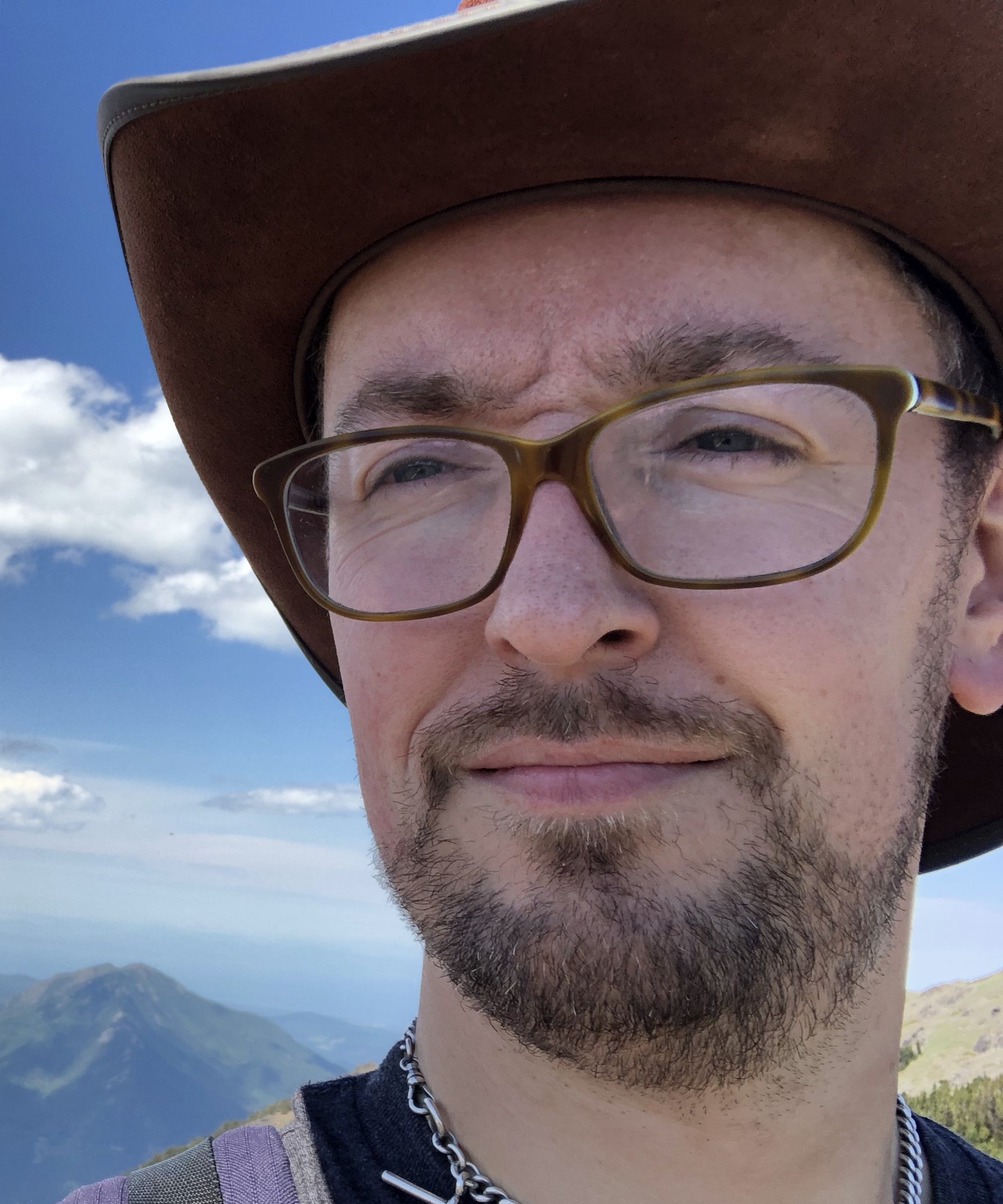
London-born botanist and gardener Dr Ross Bayton gained his PhD at the Royal Botanic Gardens, Kew, studying the classification of tropical palms. He’s the author of several books on horticulture. He is now the director of the world-renowned Heronswood Garden in Kingston, Washington, and is developing a 5-acre garden at home in nearby Bremerton.
6. Japanese forest grass

Hakonechloa macra, commonly known as Japanese forest grass, is one of the most popular ornamental grasses, and it is easy to see why. While this perennial is popular with homeowners seeking Japanese garden ideas, it is also extensively used by garden designers. When grown in groups, this plant forms an impressive understorey and will add movement and sound to any plot as the blades of grass move in the breeze.
I have grown Japanese forest grass under large trees with dense canopies, and not only will it tolerate deep shade, but it seems to thrive in darker spots. In my experience, I have found that this perennial grass prefers moist soil, and can struggle in dry weather, so it is best suited to a moisture-retentive border.
Growing happily in US hardiness zone 5 to zone 9, this grass is relatively low-maintenance and has excellent fall color. The golden foliage helps to add interest to any yard and can be cut back in the winter.
Golden Japanese forest grass is available from Nature Hills.
7. Ferns
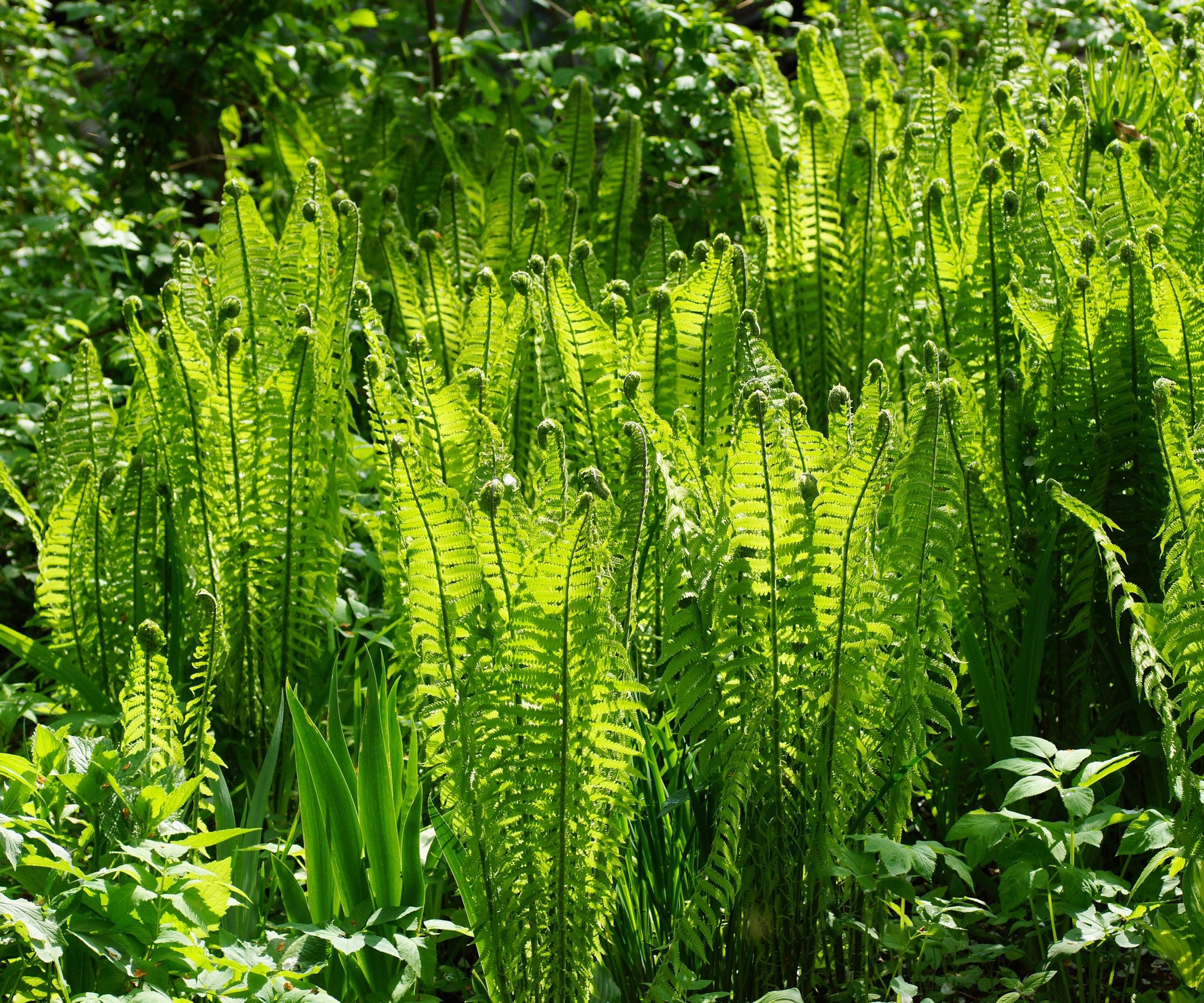
Ferns of all different types and varieties have long been a popular choice for those gardeners with shady yards. For any gardener unsure how to grow ferns, these plants thrive in partial to full shade and typically prefer moist and humid environments, although each fern will have slightly different preferences.
There are many shade-tolerant ferns available to buy online or in garden stores, such as this lady in red fern, available from Burpee. One of my favorite ferns to grow in shade is the shuttlecock or ostrich fern, Matteuccia struthiopteris, which has a unique upright growth habit, as seen in the image above. This fern is ideal for shady spots and will also add height and structure to those darker borders under shrubs and trees.
FAQs
Will flowering perennials still bloom in deep shade?
Always plant flowering perennials suited to a shaded environment, such as anemones. While these plants will be less floriferous in full shade, they will still produce blooms. If you are looking to increase flower production, try to plant these perennials towards the front of shady borders, where they might benefit from even an hour or two of sunshine.
It is always recommended to use plants that are best suited to your situation, and with so many shade-tolerant perennials to choose from, the darker spots and corners of your yard will soon be green and full of life. For further shade planting ideas, consider our guide on the best shrubs for shade.
Sign up to the Homes & Gardens newsletter
Design expertise in your inbox – from inspiring decorating ideas and beautiful celebrity homes to practical gardening advice and shopping round-ups.

Thomas is a Content Editor within the Gardens Team at Homes and Gardens. He has worked as a professional gardener for both public spaces and private estates, specializing in productive gardening, growing food and flowers. Trained in Horticulture at the Garden Museum, he has written on gardening and garden history for various publications, including The English Garden, Gardens Illustrated, Hortus, The London Gardener and Bloom. He has co-authored a Lonely Planet travel book, The Tree Atlas, due out in 2024.
-
 Everyone is obsessed with vintage tiles right now – bring the nostalgic charm of this classic design feature into your home with our 5 design ideas
Everyone is obsessed with vintage tiles right now – bring the nostalgic charm of this classic design feature into your home with our 5 design ideasHonor the past with our favorite ways to decorate with vintage tiles, as suggested by interior design experts
By Eleanor Richardson Published
-
 'It's a fast reset button' – using the 1, 2 ,3 ,4, 5 decluttering method cleared my persistent mess in seconds
'It's a fast reset button' – using the 1, 2 ,3 ,4, 5 decluttering method cleared my persistent mess in secondsIt's easy, effective and so quick to do
By Ottilie Blackhall Published